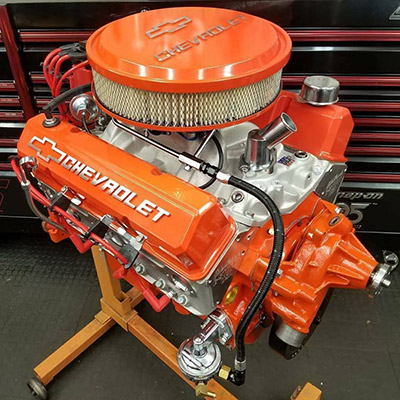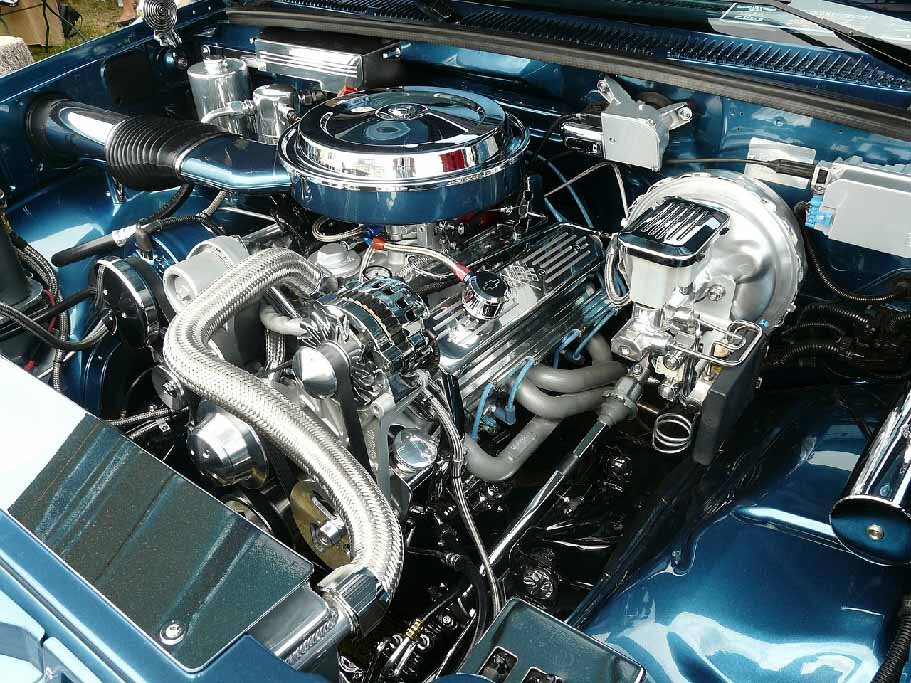A 400 cubic inch engine, commonly referred to as a “400,” is often a topic of discussion among automotive enthusiasts. Many wonder if such an engine qualifies as a big block. In this article, we will explore the definition of big block engines, the specifications of the 400 cubic inch engine, and how it stacks up against other engine types.
Understanding Engine Classifications
Before delving into whether a 400 engine is considered a big block, it is important to understand how engines are classified. Generally, engines are categorized as either small block or big block based on their size and design characteristics. Typically, the distinction between engine types arises from the engine displacement and physical dimensions.
Small block engines usually have a smaller bore and stroke, leading to lower displacement compared to big blocks. Big block engines, on the other hand, have larger bores and longer strokes, resulting in higher displacement capabilities. This classification plays a crucial role in performance, as larger engines generally produce more power and torque.

What is a Big Block Engine?
A big block engine is typically defined by its larger displacement, which generally exceeds 400 cubic inches. These engines are designed with larger physical dimensions to accommodate their increased capacity. As a result, big block engines often have a heavier and bulkier frame, which contributes to their performance capabilities.
Many manufacturers have produced big block engines over the years. Prominent names include Chevrolet, Ford, and Chrysler, each offering various models that are characterized by their unique designs and performance metrics. The inherent design of big blocks also allows for greater upgrades and modifications, catering to the needs of automotive enthusiasts seeking improved performance.
Exploring the 400 Cubic Inch Engine
The 400 cubic inch engine, predominantly associated with General Motors, was produced in the early 1970s. This engine is based on the small block design but has been designed to enhance its power and performance capabilities. Due to its 400 cubic inch displacement, the 400 engine provides a considerable amount of torque, which makes it popular among car enthusiasts.
While some automotive enthusiasts consider engines above 400 cubic inches to be big blocks, the 400 itself is derived from a small block architecture. Dimensions such as the block height and bore-stroke ratio typically classify the 400 engine as a big block by some measures, although it doesn’t strictly fit the conventional definition of a classic big block engine.
Performance Characteristics of the 400 Engine
When evaluating the performance characteristics of the 400 engine, it’s essential to consider its torque and horsepower ratings. The standard 400 cubic inch engine produces about 200 to 300 horsepower, depending on its configuration and tuning. The torque figures are generally notable, often exceeding 400 foot-pounds, which contributes to strong performance for both street driving and racing.
Performance upgrades are commonly pursued with the 400 engine to improve its output. Changes may involve enhancing the intake, exhaust, and ignition systems. Additionally, many enthusiasts opt for higher-performance carburetors and headers to extract even more power. This adaptability is one reason the engine remains a favorite among performance enthusiasts.
Comparing the 400 to Other Engine Sizes
When comparing the 400 cubic inch engine to other engine sizes, it’s useful to view its role in the larger landscape of engine classifications. Small block engines typically range from 265 to 400 cubic inches, while big block engines generally start at 396 cubic inches or larger. This distinction sometimes places the 400 cubic inch engine in a “grey zone.”
In terms of physical size and performance, the 400 can be seen as a middle ground, providing a balance between the efficiency and compactness of a small block and the power associated with big blocks. While it’s not conventionally classified as a big block based on some definitions, its performance capabilities reflect traits typically desired in larger engines.
The Evolution of Engine Classifications
Over the years, the classifications of engines have evolved based on advancements in technology and manufacturing processes. As engine designs have progressed, some of the characteristics that defined big block and small block engines have blurred. For instance, modern small block engines, due to improvements in material and engineering design, can rival the performance of older big blocks.
Moreover, the performance enhancements available today allow for small block engines to achieve significant output, often leading to debates about the relevance of traditional classifications. Thus, while the 400 cubic inch engine may not be a traditional big block, it embodies attributes similar to those found in larger engines, making it a valuable asset in performance contexts.
The Popularity and Legacy of the 400 Engine
The 400 cubic inch engine possesses a unique legacy within the automotive world. Though it was predominantly produced between 1970 and 1976, it remains popular among car enthusiasts and builders. The engine’s ability to generate substantial torque and horsepower makes it a solid choice for performance vehicles, including classic muscle cars and racing projects.
In recent years, the 400 engine has garnered attention in custom builds and restorations. Car enthusiasts frequently seek to restore vehicles featuring the 400 engine, often enhancing them with modern performance parts. As such, the engine’s legacy continues through the community of automotive enthusiasts dedicated to preserving its history and performance potential.
Is the 400 Engine a Big Block or Not?
The question of whether a 400 cubic inch engine is classified as a big block does not have a straightforward answer. Some enthusiasts classify it as a big block because it possesses notable displacement, but in some cases, it retains characteristics of small block engines. This divide often leads to discussions among automotive enthusiasts.
Ultimately, the classification of the 400 engine depends on the context and perspective of the individual discussing it. While it may not fit the traditional big block mold in every aspect, its performance and familial association with larger engines contribute to its perceived status in the automotive landscape.
Conclusion
In summary, the classification of a 400 cubic inch engine as a big block engine is a subject of debate among automotive enthusiasts. While it features characteristics typically associated with high performance, it originates from small block architecture. Despite its categorization, the 400 engine holds its ground as a powerful option for those seeking performance in their vehicles.
Whether you’re restoring a classic muscle car or building a high-performance racing machine, the 400 engine’s legacy and adaptability make it a worthy contender on the automotive scene. Understanding these classifications and performance characteristics not only enhances your knowledge of engine types but also enriches your appreciation for the world of automotive performance.
FAQs
1. What defines a small block engine?
A small block engine is typically characterized by its smaller displacement, generally ranging from 265 to 400 cubic inches. These engines are designed for efficiency and are smaller in physical dimensions compared to big block engines.
2. What is the difference in fuel efficiency between small block and big block engines?
Typically, small block engines are more fuel-efficient due to their smaller displacement and lighter weight. Big block engines, while more powerful, often consume more fuel to generate their additional horsepower and torque.
3. Are big blocks always more powerful than small blocks?
While big block engines often have higher displacement and can generally produce more power, advancements in small block technology have allowed some to achieve performance levels similar to big blocks. Power output can vary based on tuning, modifications, and engine design.
4. Can I modify a 400 engine for modern performance needs?
Yes, many enthusiasts modify the 400 engine with modern performance upgrades such as improved intake and exhaust components, fuel management systems, and ignition systems. These upgrades can enhance its performance metrics significantly.
5. What vehicles commonly feature the 400 engine?
The 400 cubic inch engine was predominantly featured in various General Motors vehicles during the early 1970s. Models like the Chevrolet Camaro, Pontiac Firebird, and Oldsmobile Cutlass are some popular ones that came equipped with this engine.



